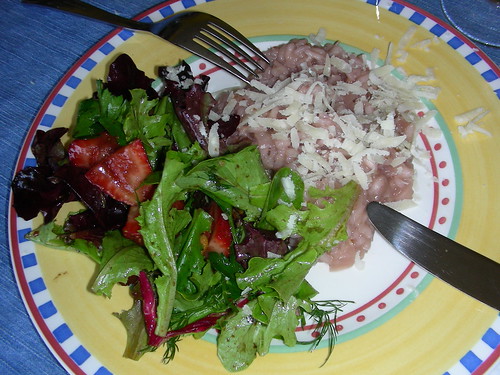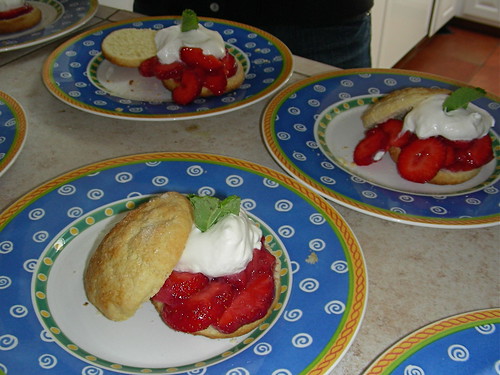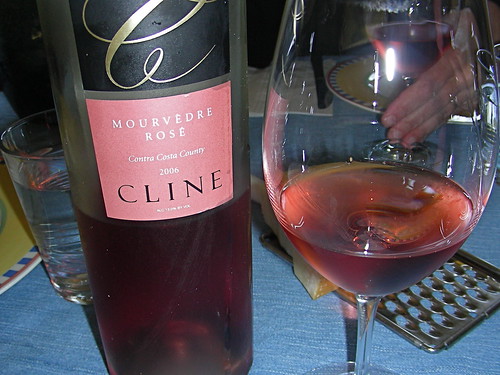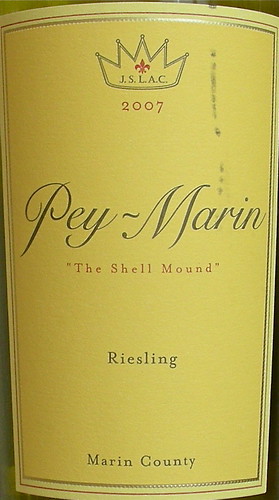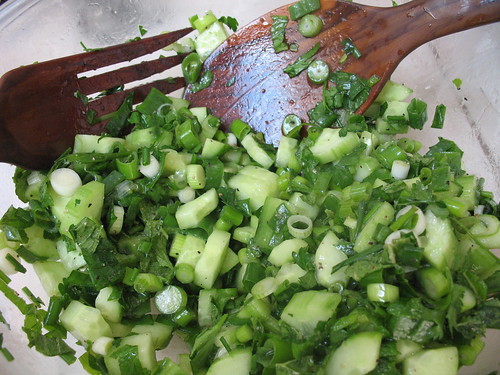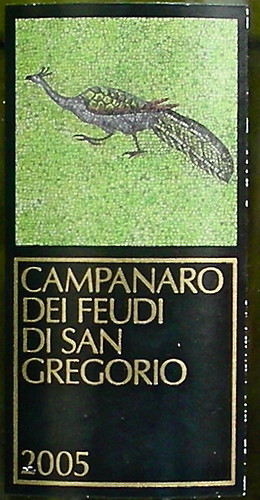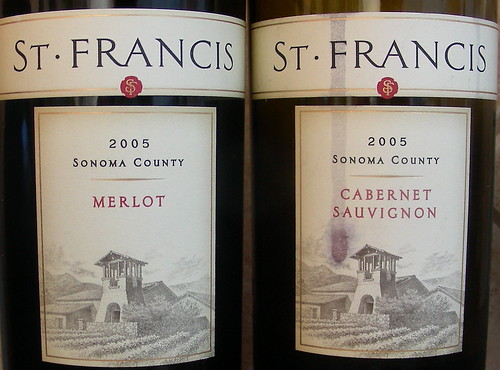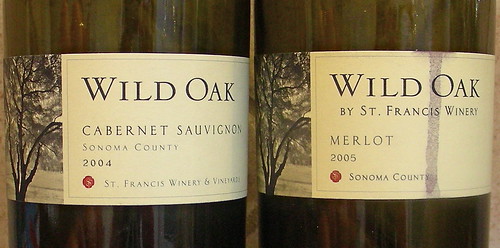How familiar are you with the wines of the
Rhône Valley? Although the Rhone Valley is among France's best wine regions, we are not always aware of its multi-faceted viticulture and wine traditions.
The Rhône Valley consists of two fairly distinct viticultural regions. The Northern Rhône is characterised by a continental climate with cold winters and warm summers. It produces red wines from the native grape Syrah, which is sometimes blended with white grapes, and white wines from Viognier, Marsanne, and Roussanne. The Southern Rhône has a Mediterranean climate with mild winters and hot and dry summers. The region produces red, white and rosé wines, which are generally blends of several grapes including Syrah, the drought-resistant Spanish grapes Grenache, Mourvèdre, and Carignan, as well as Cinsault, Viognier, Marsanne, Roussanne, and Clairette.
For this tasting, we had a selection of seven white and red wines from Northern and Southern Rhône. Here are the wines that we tasted:
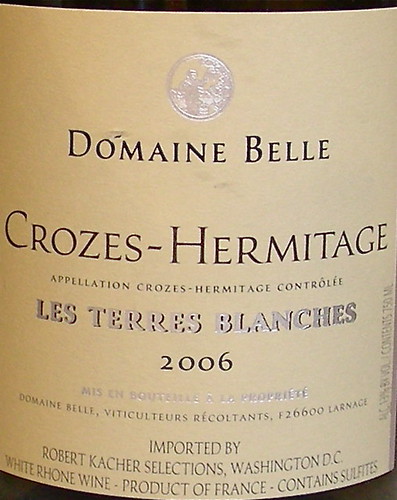
•
2006 Crozes-Hermitage Blanc Albert Belle Les Terres Blanches: a former member of the local co-op, Domaine Albert Belle has developed a solid reputation for producing top quality wines. The estate has now 19 hectares over 4 communes and two appellations,
Crozes-Hermitage and
Hermitage. This Crozes-Hermitage Blanc is a blend of Marsanne and Roussanne. My notes: light golden color, shy nose, fresh and light-bodied on the palate with an oily mouthfeel. Butterscotch aftertaste. Pretty nice.
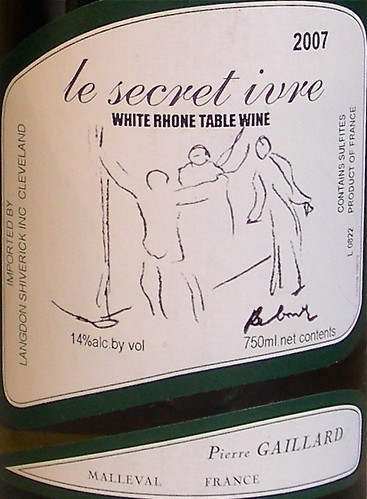
•
2007 Le Secret Ivre Domaine Pierre Gaillard:
Pierre Gaillard started working in the wine business at a very young age and is now considered one of the Northern Rhone's best producers.
Le Secret Ivre, which means
The Drunken Secret, is 60% Viognier and 40% Roussanne. My notes: golden color, floral aromas on the nose, somewhat unbalanced on the palate. Not a crowd pleaser.
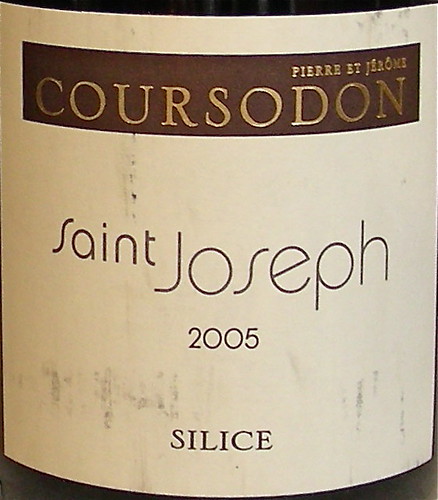
•
2005 Saint-Joseph Domaine Coursodon Silice:
Domaine Pierre Coursodon is a 12 hectare estate in the
Saint-Joseph appellation — the second largest appellation in the Northern Rhône after Crozes-Hermitage — growing Syrah and Marsanne grapes. Harvests are manual and vinification is traditional. My notes: 100% Syrah. Deep color, expressive fruity nose, fresh and supple on the palate, excellent with charcuterie.
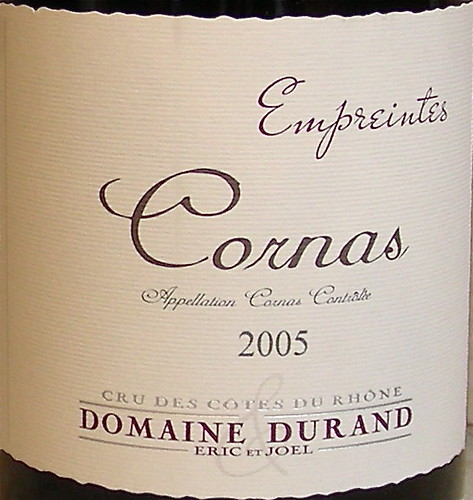
•
2005 Cornas Eric et Joël Durand Empreintes:
Cornas, a Celtic word that means
burnt earth, is one of the smallest appellations in the Northern Rhône. The production is only red wine from the Syrah grape. Domaine Eric et Joël Durand is located in the southern part of the Saint-Joseph appellation and is also making wine from the neighboring Cornas. My notes: 100% Syrah. Dark color, peppery and blackberry aromas on the nose, full-bodied, great texture on the palate, multi-dimensional. Very classy, a big favorite of the evening.
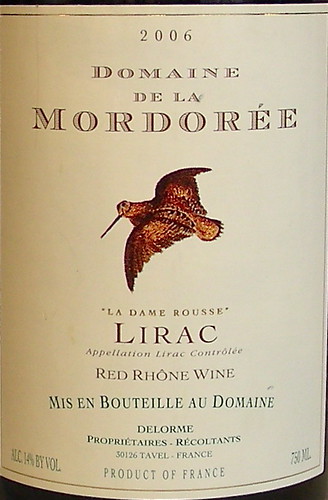
•
2006 Lirac Domaine de la Mordorée Cuvée La Dame Rousse:
Lirac is located along the right bank of the Rhône river, opposite
Chateauneuf-du-Pape, in the southern Rhône Valley.
Domaine de la Mordorée is named after the poetic local nickname used for the woodcock that flies over the region during its migrations. The domain produces wines from the Châteauneuf du Pape, Lirac, and Tavel appellations. The
Dame Rousse cuvée is half Syrah, half Grenache from 40-year-old vines. My notes: deep color, sweet fruit on the nose, but after the Cornas, seemed aggressive in the mid-palate. More detractors than amateurs.

•
2005 Châteauneuf-du-Pape Domaine Chante Cigale:
Châteauneuf-du-Pape is the most renowned appellation of the Southern Rhône Valley. Its terroir is characterized by a soil covered with
galets or
pebbles. The pebbles retain heat during the day and release it at night, which accelerates the ripening of the grapes. It also retain moisture in the soil during the dry summer months. Thirteen grape varieties are allowed to be used in the Châteauneuf-du-Pape appellation. The Châteauneuf-du-Pape of
Domaine Chante Cigale is a blend of 65% Grenache, 20% Syrah, 10% Mourvèdre and 5% Cincault. The average age of the vines is 50 years. The vinification is traditional and ageing is done with a combination of foudres, new barrels, and cement tanks. My notes: deep color, aromatic nose, rich and full-bodied on the palate, tasty finish, another favorite of the evening.
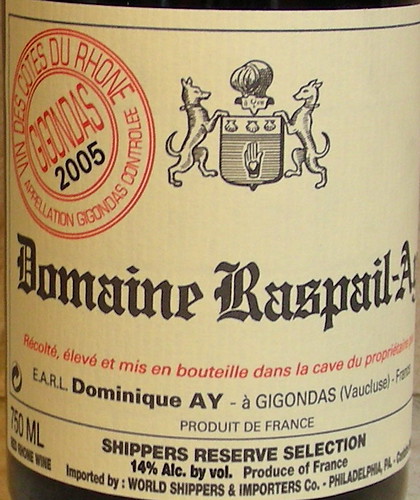
•
2005 Gigondas Domaine Raspail-Ay Réserve:
Gigondas is one of the best appellations in the Southern Rhône. The production is mostly Red with a small amount of Rosé. The place has been renowned for the quality of its wines since Roman times when it was named
Jocunditas, which means
joy or
pleasantness in Latin. Founded in 1854,
Domaine Raspail-Ay is a respected 18 hectare property around the village of Gigondas. My notes: a blend of Grenache, Syrah and Mourvèdre. Deep color, ripe berries on the nose, full-bodied, bigger than the Châteauneuf, slightly more rustic but good.
For our next meeting, we'll be pairing wine and cheese, so don't miss it!
Previous wine club tastings:
•
Pinot Noir Tasting•
Second "Guess The Wine" tasting party•
Wine and Cheese pairingTechnorati tags: wine food & drink
